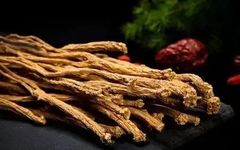The Ruler of Central Equilibrium—Dang Shen (Codonopsis)
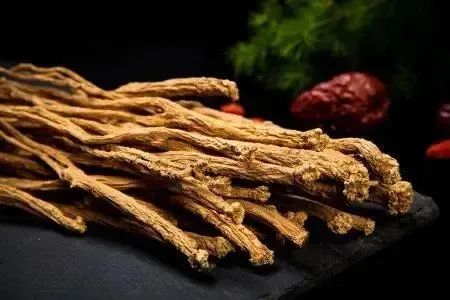
Dang Shen, named after its primary production area in the ancient Shanxi Shangdang region, is known for its high altitude, hence the name Shangdang. According to the Ben Cao Zheng Yi: “Dang Shen is capable of tonifying the spleen, nourishing the stomach, moistening the lungs, generating fluids, and invigorating the central qi. It is not as intense as Ren Shen (Ginseng). Its most valuable qualities are that it tonifies the spleen without causing dryness, nourishes the stomach yin without being damp, moistens the lungs without being cold, nourishes the blood without being overly rich, and invigorates the clear yang, stimulating the central qi without causing dryness or stagnation.” This balance is what is meant by ‘Central Equilibrium’. Dang Shen has effects similar to Ren Shen, but without the intense warming and drying properties, prized for its neutral nature and harmonizing qualities.
【Alias】 Lion’s Head Ginseng, Shangdang Ginseng, Lu Dang
【Source】This herb is the dried root of the plants Codonopsis pilosula (Franch.) Nannf., Codonopsis pilosula Nannf. var. modesta (Nannf.) L. T. Shen, or Codonopsis tangshen Oliv. Harvested in autumn, cleaned, and dried.
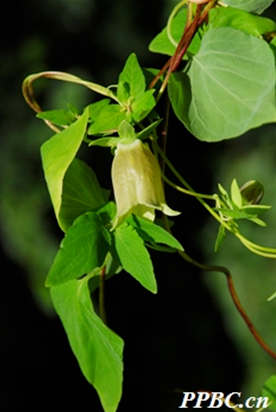
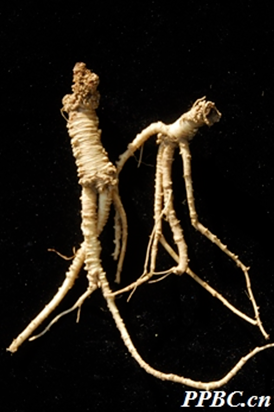
【Characteristics】Dang Shen has a long cylindrical shape, with numerous warty protrusions at the root’s head and buds. Each bud scar has a depressed round dot at the top, commonly referred to as the ‘Lion’s Head’. The root’s head has dense annular transverse wrinkles that gradually become sparser downwards, some reaching half the length. Cultivated varieties may have fewer or no annular transverse wrinkles. The entire root has longitudinal wrinkles and scattered horizontal lenticels, with black-brown gelatinous material often found at the broken root ends. The texture is slightly hard or somewhat flexible, with a slightly flat fracture surface, which may have cracks or radial patterns. The skin is light yellow-white to yellow-brown, and the wood part is light yellow, presenting a ‘Chrysanthemum Heart’ appearance. It has a distinctive aroma and a slightly sweet taste.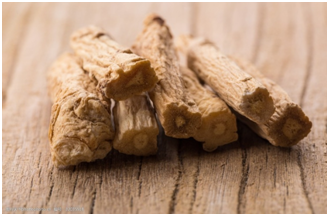
【Preparation】Raw Dang Shen, Fried Dang Shen
【Properties and Channels】Sweet, neutral. Enters the Spleen and Lung channels.
【Functions and Indications】Tonifies the spleen and benefits qi, nourishes blood and generates fluids. Used for spleen and lung qi deficiency, poor appetite, fatigue, cough with shortness of breath, insufficient qi and blood, pale complexion, palpitations, shortness of breath, and both qi and fluids deficiency with thirst.
【Applications and Combinations】
1. For spleen and lung qi deficiency, poor appetite, and cough with shortness of breath, often combined with Bai Zhu (Atractylodes) and Fu Ling (Poria) to tonify qi, strengthen the spleen, and eliminate dampness. Pharmacological studies on Dang Shen indicate that its extract can regulate gastrointestinal motility, has anti-ulcer properties, inhibits gastric acid secretion, and protects gastric mucosa. It can treat chronic atrophic gastritis with stomach yin deficiency, chronic diarrhea, ulcerative colitis, and gastric antritis in those with spleen deficiency. For lung qi deficiency, cough, and shortness of breath, it can be combined with Huang Qi (Astragalus) and Ge Jie (Gecko).
2. For insufficient qi and blood, pale complexion, palpitations, and shortness of breath, it is often combined with Huang Qi (Astragalus), Dang Gui (Angelica), and Shu Di Huang (Rehmannia) to enhance the effects of tonifying qi and blood. Dang Shen can elevate peripheral blood hemoglobin and promote the compensatory hematopoietic function of the spleen. It can treat anemia, leukemia, and thrombocytopenia in those with blood deficiency.
3. For both qi and fluids deficiency, shortness of breath, thirst, and internal heat leading to thirst, it can be combined with Mai Dong (Ophiopogon), Wu Wei Zi (Schisandra), and Huang Qi (Astragalus).
【Dosage】Decocted, 9-30g.
【Precautions】Should not be used with Li Lu (Veratrum).
【Storage】Store in a cool, dry place.
References:
Chinese Pharmacopoeia 2020 Edition
Study of Chinese Herbal Processing 2005 Edition
Chinese Herbal Medicine 8th Edition
Chinese Herbal Identification 8th Edition
Chinese Herbal Pharmacology 8th Edition
Note: Images and text sourced from the internet; please contact for removal if infringing.

